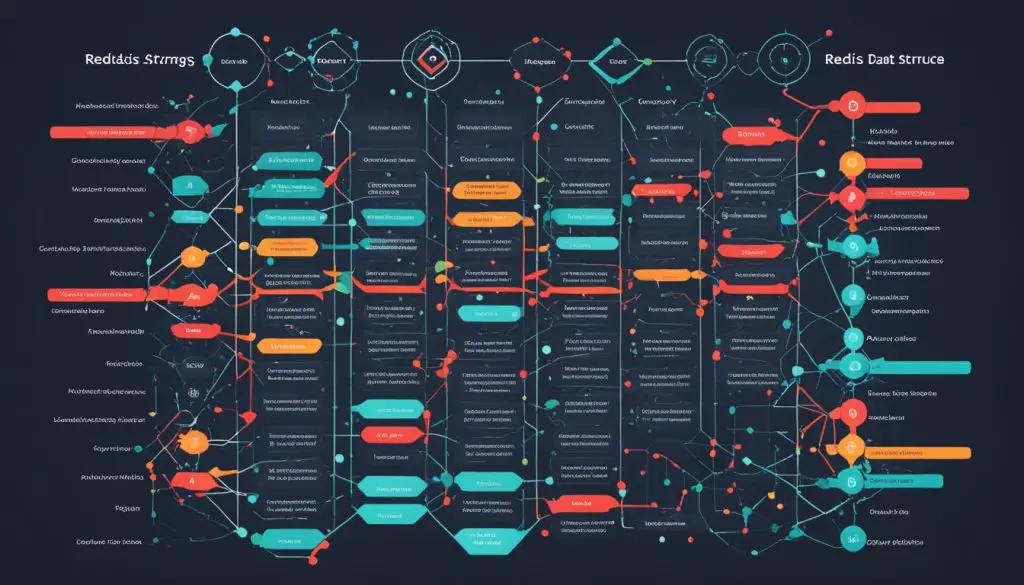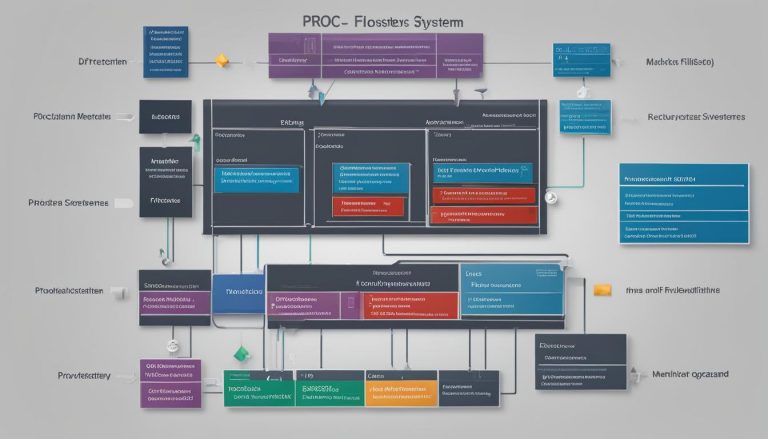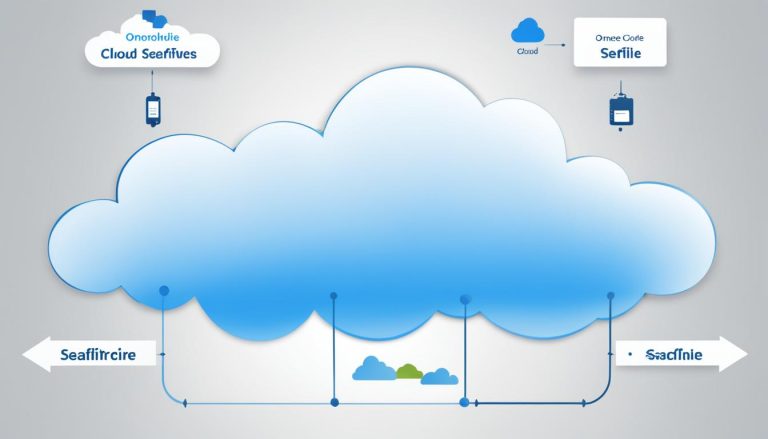Understanding What is Redis: A Quick Guide
In today’s fast-paced digital world, optimizing application performance and efficiency is of utmost importance. One technology that has gained significant popularity in achieving these goals is Redis. In this guide, I will provide an introduction to Redis, explaining its basics, features, and use cases.
Redis, short for Remote Directory Server, is an in-memory data structure store. It serves as a disk-persistent key-value database that supports multiple data types. Its ability to store and retrieve data quickly makes it an ideal choice for applications that demand high performance and real-time data processing.
Redis is capable of handling various data structures, including mapped key-value-based strings, lists, sets, and hashes. This versatility allows developers to leverage Redis in different scenarios, such as caching, message queuing, and session management.
Whether you need to speed up your web application, build a message broker system, or manage short-lived data, Redis has got you covered. Its ability to handle millions of transactions per second and provide high availability through automatic failover and replication makes it a reliable solution for data-intensive applications.
Redis can be installed locally by downloading the latest binaries from the Redis website or as a cloud-managed service through Redis Labs. Either way, Redis offers a straightforward setup process, enabling you to quickly start utilizing its features.
Key Takeaways:
- Redis is an in-memory data structure store that enhances application performance and efficiency.
- It supports multiple data types, including mapped key-value-based strings, lists, sets, and hashes.
- Redis can be used for caching, message queuing, session management, and more.
- It excels in use cases that require high throughput, low latency, and real-time data processing.
- Redis can be installed locally or used as a cloud-managed service through Redis Labs.
Redis Installation and Setup
Redis installation is a straightforward process that requires a few simple steps. By following these instructions, you’ll have Redis up and running in no time.
To begin, you can download the latest Redis binaries from the Redis website or utilize the provided command:
Once you have the binaries, extract them and navigate into the Redis directory:
Next, compile and build the Redis executables using the following command:
With Redis built, you can now start it locally using the following command:
To ensure the successful installation and connection to Redis, you can use the Redis Command-Line Interface (CLI). Test the connection by pinging the server:
The Redis CLI provides a user-friendly way to interact with Redis commands and manage your data. You can use various commands such as SET, GET, and INFO to manipulate and retrieve data stored in Redis. For a comprehensive list of available commands and more detailed information on installation, consult the Redis documentation.
Redis Features and Use Cases
Redis offers several features and use cases that make it stand out among other databases. Let’s explore its key features, performance, and some of its popular use cases.
Fast and Performant
Redis is exceptionally fast and capable of handling a high number of SETs and GETs per second. Its in-memory data storage allows for quick data retrieval and processing, making it ideal for use cases that demand high throughput and low latency.
Rich Data Types and Atomic Operations
Redis supports a variety of data types, including lists, sets, sorted sets, and hashes. These rich data types enable applications to store and manipulate complex data structures effortlessly. Furthermore, Redis ensures the integrity of data through atomic operations, guaranteeing consistency and reliability in data manipulation.
Multi-Utility Tool
Redis serves as a versatile tool with numerous use cases. It can be utilized as a caching server, speeding up web application response times by storing frequently accessed data in memory. Additionally, Redis is commonly used in messaging queues, enabling the efficient exchange of information between different components of an application. It also excels in session management, providing a scalable and high-performance solution for managing user sessions. Its ability to persist data on disk ensures reliable storage for short-lived data, further adding to its multi-utility capabilities.
Real-time Data Processing and High Availability
Redis is well-suited for use cases that require real-time data processing. It can handle millions of transactions per second, making it an ideal choice for applications that demand fast and efficient data manipulation. Redis offers high availability through features like automatic failover and replication, ensuring your data remains accessible even in the event of failures or system disruptions.
Popular Use Cases
Redis finds extensive use in a wide range of applications and industries. It is commonly employed in web applications to improve speed and performance, enhance user experience, and handle high concurrency. In message queuing systems, Redis acts as a reliable and efficient messaging broker, facilitating the seamless flow of information between distributed components. Additionally, Redis is widely adopted in data-intensive applications that require real-time analytics, such as real-time leaderboards, user activity tracking, and stream processing.
To summarize, Redis offers a powerful combination of performance, rich data types, and versatility that meets the demands of modern applications. Its use cases span various industries and application scenarios, making it an invaluable tool for developers looking to optimize their application’s performance and efficiency.
Redis Data Structures and Commands
In order to efficiently manipulate and store data, Redis supports a variety of data structures, including strings, hashes, lists, sets, and sorted sets. Each data structure in Redis serves a specific purpose and offers unique capabilities:
Strings:
Strings in Redis can store not only strings, but also integers and floating-point numbers. They are widely used for simple key-value pairs and can be modified using commands like APPEND, GET, and SETEX.
Hashes:
Redis hashes are used to store field-value pairs, making them ideal for storing objects or records with multiple attributes. With commands like HSET, HGET, and HDEL, it’s possible to add, retrieve, and remove individual fields within a hash.
Lists:
Redis lists allow you to store ordered collections of strings. They are particularly useful for implementing queues, stacks, or maintaining a history of events. Commands like LPUSH, RPUSH, and LPOP enable you to append, prepend, or retrieve elements from a list.
Sets:
Sets in Redis store unordered collections of unique strings. They are often used for membership operations, such as checking if an item exists or retrieving the intersection or union of multiple sets. SET, SADD, and SMEMBERS are some of the commands used for working with sets.
Sorted Sets:
Sorted sets maintain a collection of non-repeating strings, each associated with a numeric score. This data structure is helpful for maintaining leaderboards, ranking systems, or sorted collections. You can use commands such as ZADD, ZRANK, and ZRANGE to add elements, retrieve their rank, or fetch a range of elements based on their score.
These Redis data structures can be manipulated using a wide array of commands, providing granular control and flexibility in managing your data. The atomic nature of Redis commands ensures consistent and reliable operations. Here is a summary of some common Redis commands for each data structure:
| Data Structure | Commands |
|---|---|
| Strings | SET, GET, INCR, APPEND |
| Hashes | HSET, HGET, HDEL, HGETALL |
| Lists | LPUSH, RPUSH, LPOP, LRANGE |
| Sets | SADD, SISMEMBER, SMEMBERS, SUNION |
| Sorted Sets | ZADD, ZRANK, ZRANGE, ZREMRANGEBYRANK |
These are just a few examples of the available Redis commands. For a comprehensive list of data structures and associated commands, refer to the Redis documentation.
Redis data structures and commands provide a powerful toolkit for managing and organizing your data efficiently. By leveraging the appropriate data structure and command, you can unlock the full potential of Redis and optimize your application’s performance.

Conclusion
In conclusion, Redis is a powerful and versatile in-memory data structure store that offers exceptional performance and a wide range of use cases. With its support for various data types and high throughput capabilities, Redis is highly recommended for applications that require fast data processing and low latency. Whether you choose to install Redis locally or utilize the convenient cloud-managed service provided by Redis Labs, you can easily leverage its capabilities to enhance the performance and efficiency of your applications.
Redis’s popularity and extensive community support make it a reliable choice for developers seeking a scalable and robust database solution. Its flexible data structures, including strings, hashes, lists, sets, and sorted sets, allow for efficient and atomic data manipulation. Redis’s ability to handle millions of transactions per second and provide high availability through features like automatic failover and replication further solidifies its position as a top choice in the database landscape.
In summary, Redis is a must-have tool for developers, offering exceptional performance, extensive data types, and a wide range of use cases. By understanding the basics of Redis, exploring its installation process, key features, and data structures, you can unlock its full potential and leverage it to optimize your application’s performance. With Redis, you can achieve real-time data processing, low latency, and high throughput, making it an invaluable asset for any application in need of speed and efficiency.
FAQ
What is Redis?
Redis (which stands for Remote Directory Server) is an in-memory data structure store. It is a disk-persistent key-value database with support for multiple data types.
What are the key features of Redis?
Redis offers a mapped key-value-based caching system, support for multiple data types, and the ability to withstand multiple concurrent write requests through sharding.
How can I install Redis?
To install Redis, you can download the latest binaries from the Redis website or use the provided command. After extracting the binaries, navigate into the Redis directory and run the make command to compile and build the executables. To start Redis locally, use the command “./redis-server”.
What are some common use cases for Redis?
Redis can be used as a caching server, message broker, or in publisher/subscriber systems. It is commonly used in web applications, message queuing systems, and data-intensive applications.
What are the supported data structures in Redis?
Redis supports various data structures including strings, hashes, lists, sets, and sorted sets. Each data structure has specific commands for performing operations like appending to a string, adding elements to a list, checking if an item exists in a set, and more.
Source Links
- https://blog.logrocket.com/guide-to-fully-understanding-redis/
- https://redis.io/docs/about/
- https://www.tutorialspoint.com/redis/redis_quick_guide.htm
- About the Author
- Latest Posts
Mark is a senior content editor at Text-Center.com and has more than 20 years of experience with linux and windows operating systems. He also writes for Biteno.com






